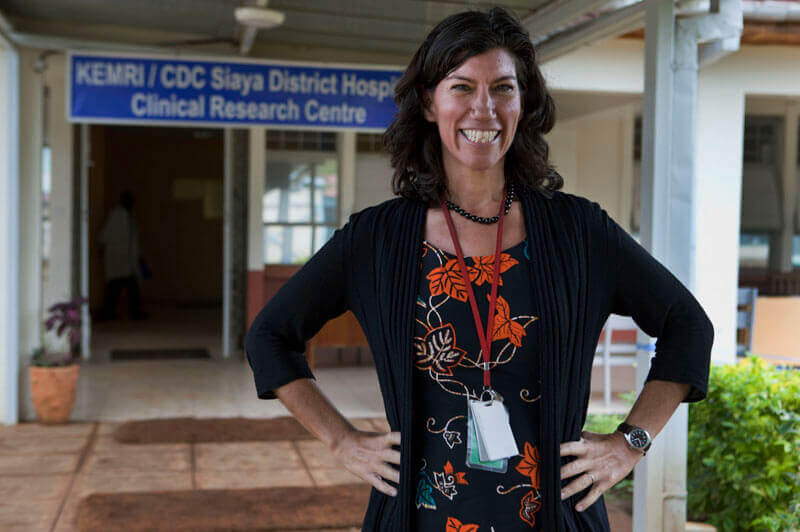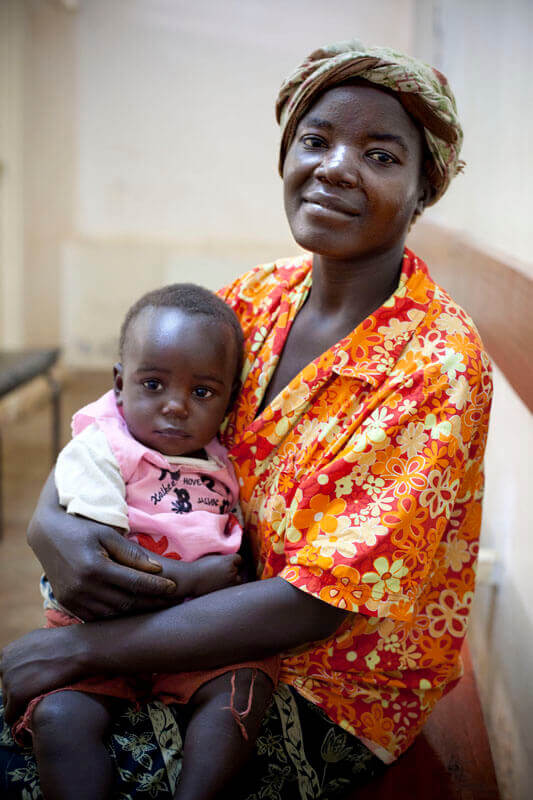Kim LufkinGHTC
Kim Lufkin is a communications officer at GHTC.
Some of the most incredible health research is taking place in Kenya right now. Because of this work, we are on the cusp of the most exciting new tools
in global public health in recent years—the first ever malaria vaccine, gels women can use to protect themselves from HIV, new drugs for neglected
diseases that affect the poorest of the poor. Kenya is also rolling out an array of lifesaving new health products that research has already made available,
like HIV and AIDS drugs, vaccines to protect children from pneumonia, and insecticide-treated wallpaper that prevents malaria inside people’s homes.
During the GHTC’s recent trip to Kenya, I was fortunate to visit several of these global health research projects, most of them run by our dedicated coalition members like the Drugs for Neglected Diseases initiative (DNDi), PATH, the International Partnership for Microbicides (IPM), Aeras, and the International AIDS Vaccine Initiative (IAVI).
We also saw firsthand how the US is making a huge impact in health research in the country, through the work of agencies like the US Agency for International Development (USAID), Centers for Disease Control and Prevention (CDC), and the Department of Defense (DoD).

Although we visited a range of projects, I was left with the lasting impression that much of this research is so close to producing new health tools that can lead to amazing innovations in public health. “We are on the verge of breakthroughs in malaria and in TB and in other diseases,” Kayla Laserson, director of the CDC/KEMRI Field Research Station in Kisian, said. “What we really need is continued support so we can get the job done, we can finish it, we can show the impact, we can save hundreds of thousands of lives here and globally.”
We also saw how past commitments to research are already saving lives. For example, research that led to the development of antiretroviral drugs is one of global public health’s biggest success stories. Rister Kageha, a woman living with HIV close to the town of Kakamega, told us how these drugs had not only saved her life, but also prevented her daughter Sylvia from contracting HIV. Because of these drugs, “I expect to live long,” Rister said, adding that she also hopes for a long life for Sylvia due to the drugs that kept her daughter HIV-negative.

And while past research has led to some health tools already in use, and current research is producing breakthroughs we could see in next five years, other innovations aren’t as far along down the research pipeline. This is why continued US support is critical to sustain the momentum around these new tools, from discovery to delivery. US support for microbicides, for example, has been vital to recent research successes, and must continue while the research continues over the next several years.
A microbicide “is one of the tools that gives us the opportunity that we could actually end the epidemic,” Elizabeth Bukusi, deputy director at the Kenya Medical Research Institute (KEMRI) who works with IPM, said. “I think we can move towards a complete AIDS-free generation that will completely stop the epidemic in its track using microbicides as part of the armament.” She added that the “US has been a critical partner in providing catalystic funds and also in funding a large number of the trials that have looked at microbicides. So US funding is absolutely critical to moving this agenda forward.”
The same can be said of US support for all global health tools, not just microbicides. Fortunately, if Kenya is any indication, the US has a long history of supporting research for health products like vaccines and drugs.This long history should not end anytime soon. It’s imperative that this historical leadership continues, so the groundbreaking research the GHTC saw in Kenya can produce the next generation of lifesaving health tools.